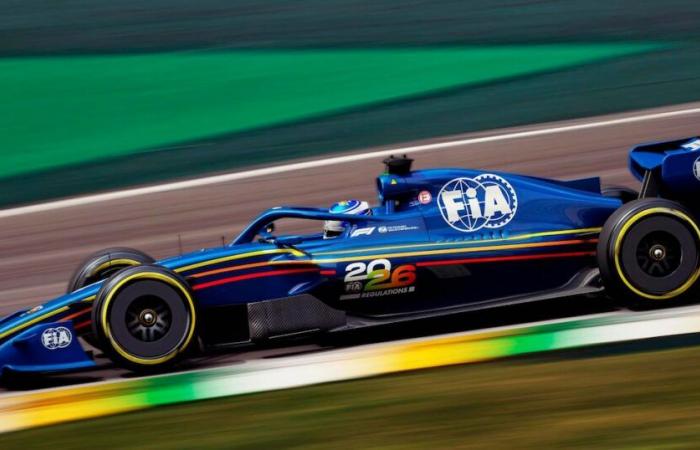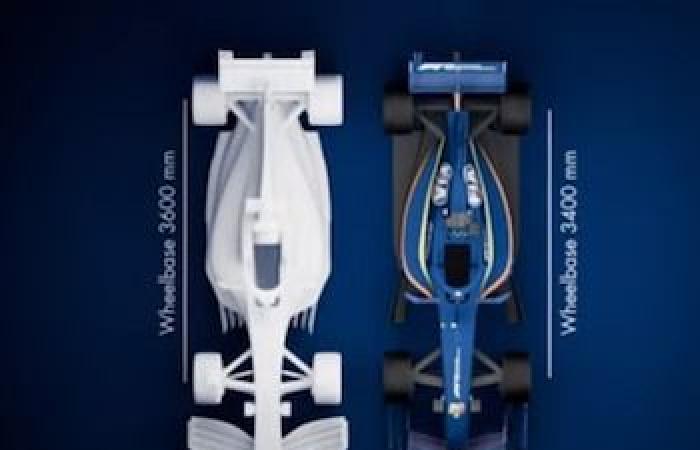The Formula 1 faces a hinge moment with respect to its future technical regulations for 2026after it was revealed that the electrical power in hybrid engines could be reduced. A proposal is being evaluated to reduce the capacity of 350 kW to 200 kW, which would be equivalent to a reduction of approximately 200 horsepowertoday included in a total of 1.000 HP.
This possible change calls into question the fundamental principle that guided the creation of regulations: an equitable distribution of 50% between internal combustion power and electrical power. Although that power reduction and the removal of aerodynamic attachments would lead to cars losing speed and, according to virtual estimates, They would be slower in the curves than the current Formula 2 cars.
The debate on this modification arises as an implicit admission that current regulations have structural defects. Although the proposal has not yet been approved, its mere consideration reflects the difficulties that have arisen from the conception of these rules. According to The Racethe problem lies in The inability to guarantee a sufficient energy supply to maintain the expected performance of monoplays, a challenge that had already been identified since the beginning of normative development.
The technical regulations for 2026 It was designed with the intention of balancing the power between the internal combustion engine and the electrical system, promoting greater sustainability and energy efficiency. However, the possibility that this principle is modified, even temporarily and only during the races, questions the viability of the decisions taken so far. The aforementioned specialized site states that if this change is implemented, it would mean that the concessions made in the design of the chassis and tires, as well as in other technical aspects, would have been in vain.

The impact of these decisions is not limited solely to the performance of the engines. The regulations also demanded significant modifications in the design of the cars, prioritizing weight and size reduction, as well as the improvement of aerodynamics. These measures, although necessary to meet the initial objectives, have generated criticism within the sector, especially with regard to the competitiveness of vehicles and the experience of the pilots.
The changes also aim to reduce the size of the cars and tires. One of the biggest challenges has been to ensure that cars maintain competitive speeds, despite the restrictions imposed by new regulations. To achieve this, a system was introduced that dramatically reduces aerodynamic resistance in the lines, while stability is maintained in the curves. In addition, it was requested from Pirelliofficial provider of tires of the F1that will contribute to this objective by reducing the width of the tires in 25 mm in the front axle and 30 mm in the rear, which represents a decrease of 8.2 % and 7.4 %, respectively. These modifications seek to maintain the necessary grip level, but have generated questions about the contact surface and its impact on general performance.
The changes were justified at the time as part of the effort to achieve 50/50 power balance. However, if the electric motor cannot operate at full capacity during races, the validity of these concessions is questioned. The situation could have been avoided in the initial design stage, for example, allowing energy to capture the front axle. However, this option was ruled out for fear of favoring manufacturers with previous experience in this technology, such as Audi.
Although the International Automobile Federation (FIA) He has worked hard to balance the demands of the different stakeholders, the design of the regulation has faced criticism of both teams and experts in the industry. According to Nicolas Tombazidirector of monoplays of the FIAthe proposed rules package for 2026 Its objective is to guarantee exciting and competitive careers. However, the fact that such a significant change is being considered in the propulsion system suggests that the commitments assumed so far may not be enough to meet expectations.

Manufacturers have also played a crucial role in this process. Their interests and priorities have influenced regulatory decisions, which has further complicated the task of designing a regulation that satisfies all parties. If it is finally decided to reverse the 50/50 power distribution principle, even partially, the modifications made in the cars and tires could lose their justification, generating a deep impact on the development of the category.
With this panorama, the possibility of reducing the electrical power of hybrid engines raises questions about the direction that the F1 In the coming years. Although the proposal seeks to address specific problems related to energy supply and track performance, It also highlights the limitations of the approach adopted so far.
As it approaches 2026the F1 Face the challenge of finding a balance between sustainability, technological innovation and competitiveness on the track. The decisions that are made in the coming months will be crucial to define the future of the category and its ability to maintain itself as the cusp of world motor racing.









